By adding Virtual Desktop or Task View feature, Windows 11/10 has given more power to its users. The earlier versions of Windows did not have this feature. One had to stack all the opened programs or tasks in one single desktop’s taskbar. As the number of opened programs grew, it started becoming very cumbersome to manage tasks. Virtual Desktops in Windows 11/10 is expected to solve this problem.
Task View is a virtual desktop manager for Windows 11/10 and is launched, when you click on its button, next to the Search bar on the taskbar. Using this feature, you can create different arrangements for your running apps and open programs. You can create new Desktops, open different apps in each, work in each or any of them whenever you want, close the opened desktops when you finish work, etc. You can switch between applications, and you can also move an application from one desktop to another. This feature augments a snapping feature called Snap Assist, which can help you snap different windows in any arrangement, a little more easily.
Create Virtual Desktop in Windows 11/10
In order to get started, click on the “Task View” icon next to the Windows search bar in the Taskbar as shown in the below image.
Here is how it looks in Windows 11:
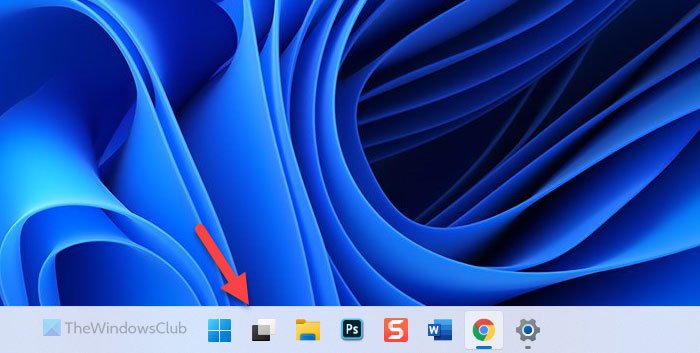
Here is how it looks in Windows 10:
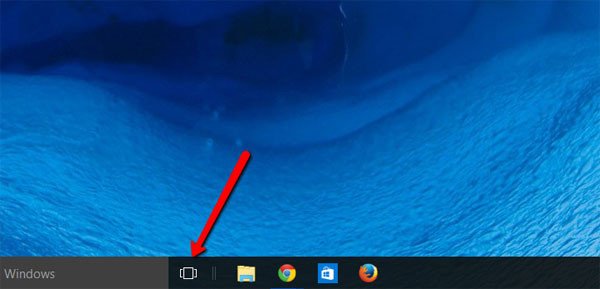
Clicking on the Task View button opens up a new view. Right above the taskbar, you can notice a panel where all desktops are stacked side by side, with a number suffixing it e.g., “Desktop 1”, “Desktop 2” etc…
Here is how it looks in Windows 11:
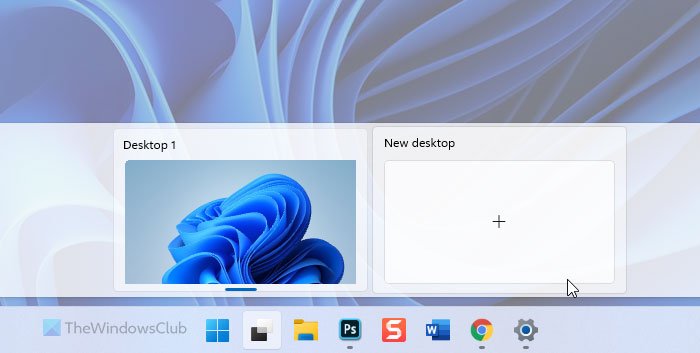
Here is how it looks in Windows 10:

You can create a new desktop by clicking on “New Desktop” icon which is present at the right corner of this panel. You can now use the created desktop to run and group your programs within the created desktop. Win+Ctrl+D will also create a new virtual desktop.
Read: How to rearrange Virtual Desktops.
Use Virtual Desktop in Windows 11/10
The Virtual Desktop feature allows one to add an unlimited number of desktops and better manage tasks. For example, one can open all editor programs on one virtual desktop and have music, photos, etc. on the other. This way, a person can logically separate tasks based on their nature and simultaneously switch between them.
Here is how it looks in Windows 11:
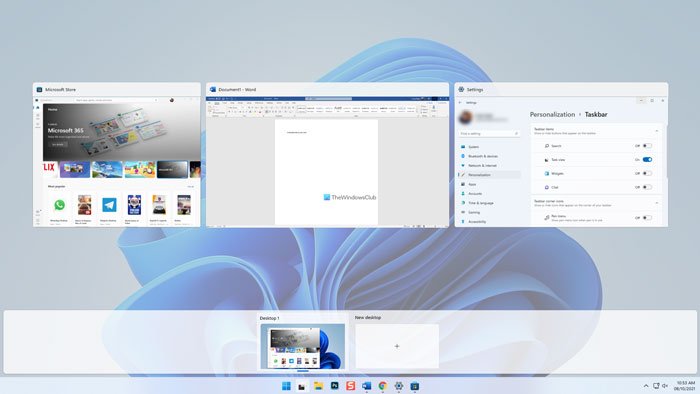
Here is how it looks in Windows 10:
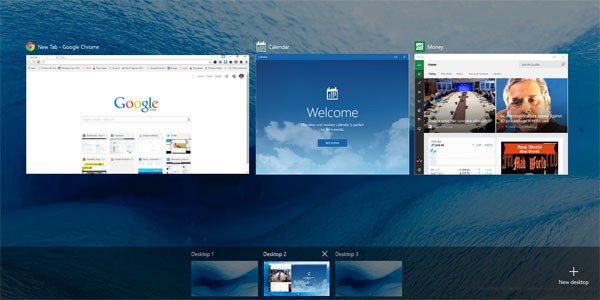
You can view all the opened programs by hovering on the thumbnail of the desktop – this gives you a quick overview of programs running on a particular desktop. You can directly navigate to a particular opened program in any desktop by clicking on it. Most importantly, you can move an opened program from one desktop to another by dragging it to your desired desktop.
To close the current virtual desktop use Win+Ctrl+F4. Win+Ctrl+ Arrows will help you navigate between your virtual desktops.
Read: How to Manage Virtual Desktops in Windows 11.
Delete Virtual Desktop in Windows 11/10
If you have opened multiple virtual desktops on your PC, you might want to close a few or all of the opened desktops. Remember, the programs opened in a particular desktop are grouped underneath it. If you wish to close any of the virtual desktops, simply click on “Task View” button in the taskbar which opens up all the active desktops, hit on the “close” button to terminate that particular desktop as shown in the image.
Here is how it looks in Windows 11:
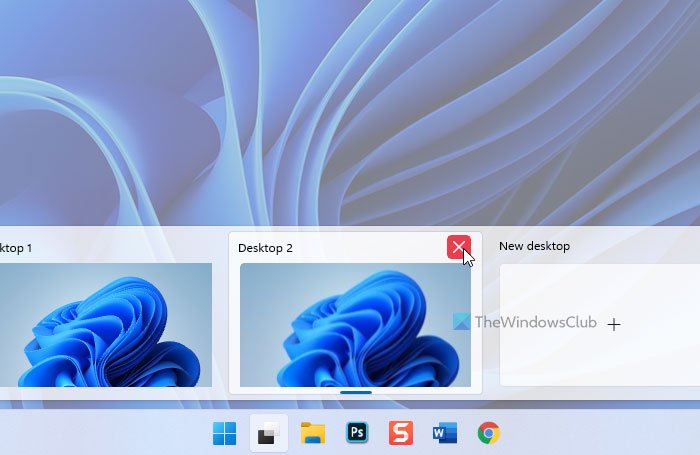
Here is how it looks in Windows 10:

This closes the intended virtual desktop, and all the open programs on that particular desktop will be moved to its neighboring desktop merging with the existing opened programs. In short, you cannot terminate all the opened programs in a desktop by simply closing the desktop – the created desktops are virtual in nature and help you organize the opened programs in a cleaner way. You will have to individually close the programs even after killing a virtual desktop.
To conclude:
- To add a new desktop, click the task view button on your taskbar and click the “new desktop” button.
- There’s no limit to how many desktops you can create.
- The top part of this view shows previews of the windows you have open, just like Alt+Tab. However, the task view also filters this list when you create virtual desktops, so only the relevant windows appear.
- Under that, you will find the list of desktops you have opened. The labels along with accurate previews make it easy to find what you want to switch to.
- What if you’re trying to find that music player and you forgot which desktop you had it on? Just hover over each desktop preview and Windows will let you see what windows are open there.
- You can drag any window to the desktop you want to move it to the right from the task view.
- You can even drag a thumbnail to the “new desktop” button to create and move it to a new desktop in one step.
TIP: This post will help you if Virtual Desktop is not working on Windows
Keyboard Shortcuts for Virtual Desktop:
- WIN + CTRL + LEFT/RIGHT: Switch to previous or next desktop
- WIN + CTRL + D: Create a new desktop
- WIN + CTRL + F4: Close the current desktop
- WIN + TAB: Launch task view.
Pro Tips
- Using the keyboard shortcut Win+Tab, one can open the Task View window.
- To navigate between different desktops, use Win+Ctrl+Left or Right Arrow key
- To close virtual desktops, use Win+Ctrl+F4.
In case you do not use this Virtual Desktop or Task View feature in Windows 11/10, you can simply remove the Task View button from the taskbar.
Now take a look at these Virtual Desktop Tips and Tricks.